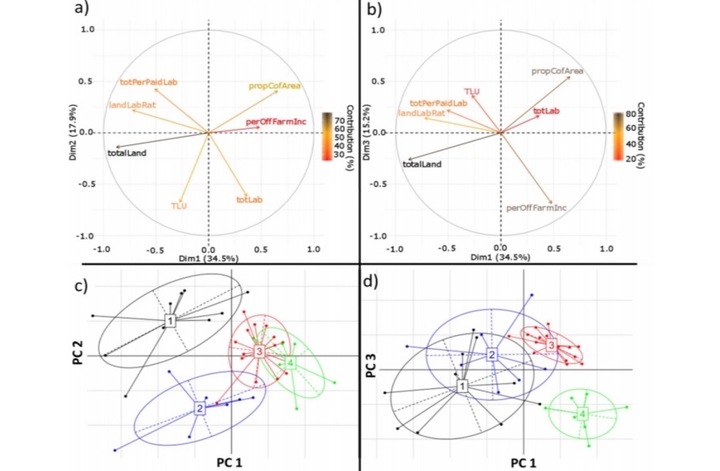Combining Farm Typology and Yield Gap Analysis to Identify Yield Limiting Factors
 Image credit: [Agriculture, Ecosystems & Environment]
Image credit: [Agriculture, Ecosystems & Environment]
Abstract
Yield variability in space and time is a wellknown phenomenon in the highland coffee production systems of Costa Rica. Our objective was to systematically unravel variations and gaps in yields due to the combined effects of farm resources and major production variables in a region of premium quality highland coffee. We surveyed 40 coffee producing farms varying in size from small to large in Llano Bonito, Costa Rica to examine their diversity based on their resources. We further conducted an agronomic diagnosis and yield estimates in 97 individual measuring plots in 63 coffee fields over two cropping years. We categorized farm diversity through a resource endowment typology built by combining direct observation with the use of multivariate analysis and clustering techniques. This resulted in four farm types, large farms depending on external labour, large farms with livestock, small farms dedicated to coffee, and small farms with an off-farm income. We then analysed coffee yield variability and yield gaps through a boundary line approach. The mean yields for two cropping years fluctuated between 2.5 and 1.6 t per ha on farm types 1 and 2 respectively. Though the yields did not differ strongly across farm types, there was a weak tendency towards yield variability between study years. The combined use of farm typology and yield gap analysis revealed multiple farm‐specific production variables that were significantly related to gaps in attainable yields. For any intervention to improve and stabilize yields in the future, the heterogeneity of farm orientation, management practices, production geographical context and soil properties must be given proper attention and integrated into crop, shade tree and soil management practices.